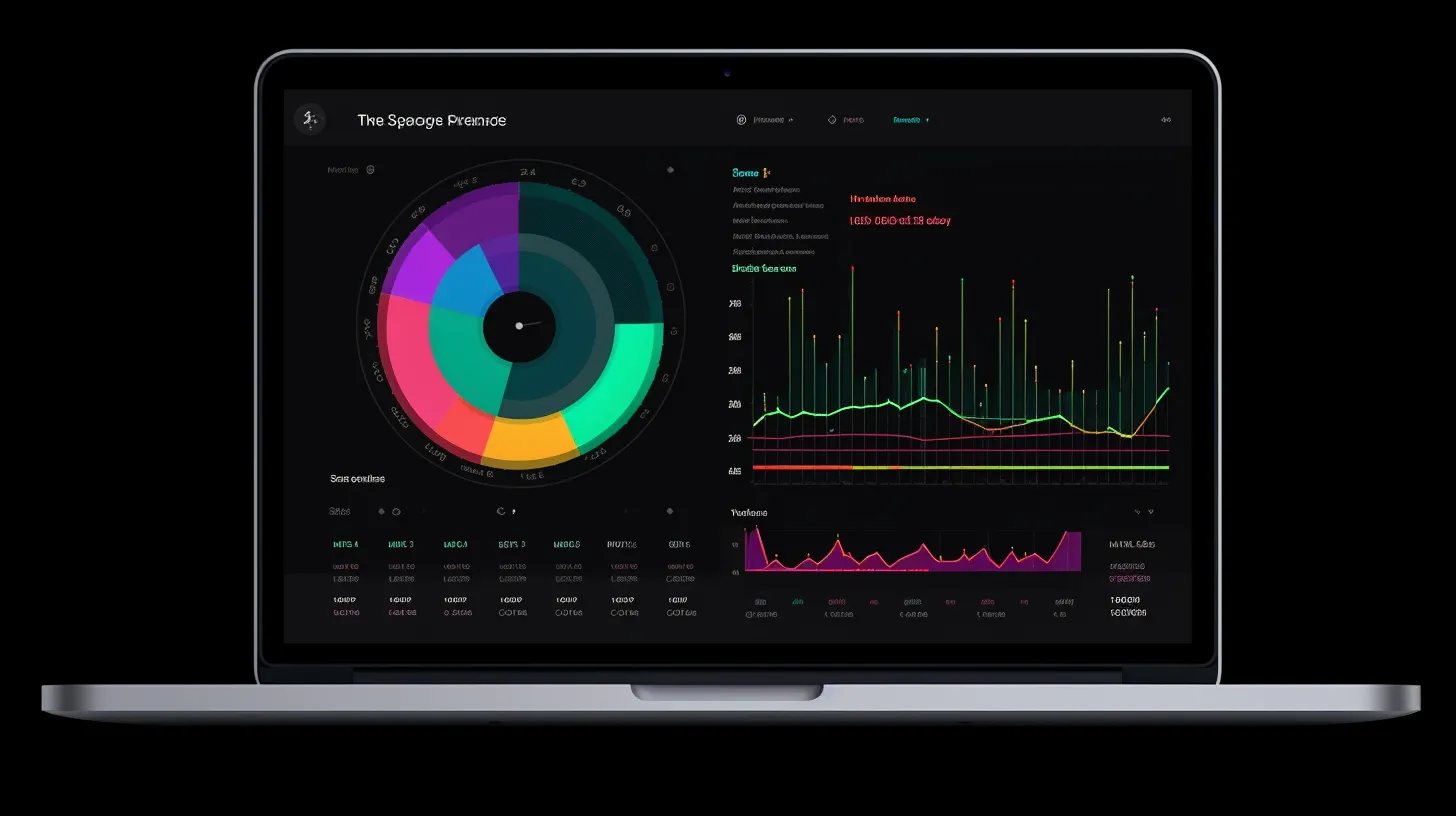Understanding And Leveraging Google's Core Web Vitals
The digital landscape is constantly evolving, with new technologies and trends emerging every day. Amidst this ever-changing environment, search engines like Google remain a key player in shaping how we access and interact with information online. Core Web Vitals (CWV) are an essential component of Google's algorithm that aims to provide users with the best possible experience when browsing websites. Understanding CWV and leveraging them effectively can have a significant impact on your website's ranking and overall performance.
In this article, we will delve deeper into what CWV are, why they matter for SEO, and how you can optimize them to improve your website's user experience. We'll explore each of the three components that make up CWV - loading speed, interactivity, and visual stability - and examine practical strategies for improving each one. Whether you're a seasoned web developer or just starting out, understanding these core web vitals is crucial for mastering SEO in today's competitive digital landscape.
What Are Core Web Vitals?
Measuring performance is critical when it comes to building a successful website. However, the focus of measuring performance has shifted from basic metrics such as page load time and speed index to more user-centric approaches. This shift is because users' expectations have evolved over the years; they now demand faster and seamless experiences that meet their needs.
Core Web Vitals are a set of specific factors Google uses to measure how quickly websites load, become interactive, and respond to user input. These vital elements include loading speed, interactivity, and visual stability. Essentially, Core Web Vitals provide insights into how well your site performs in terms of providing an excellent user experience.
The impact on user experience cannot be overstated since users expect fast-loading pages that are easy to navigate while also being visually appealing. Websites that fail to meet these standards risk losing visitors who may never return again. In addition, with search engines like Google factoring in Core Web Vitals into its ranking algorithm starting May 2021, ensuring your website meets the standard for these vitals could significantly improve your search engine rankings and ultimately lead to better visibility online.
The Importance Of Core Web Vitals For Seo
Improving search engine optimization (SEO) is a top priority for any website owner, and understanding the importance of core web vitals can play a crucial role in achieving this goal. Google's algorithm considers several factors when ranking websites on its search engine, including user experience. As such, ensuring that your website meets the standards set by Google's core web vitals can significantly enhance your site's performance.
Core web vitals consist of three main metrics: loading speed, interactivity, and visual stability. These metrics collectively measure the page load time and overall responsiveness of a website. A fast-loading website with good interactivity and minimal visual instability translates to better user experience, which is directly correlated with higher Google search rankings. Therefore, focusing on improving these metrics should be an essential aspect of any SEO strategy.
Incorporating strategies to improve core web vitals may involve optimizing image sizes or reducing server response times. Additionally, using techniques like lazy loading images or deferring non-critical JavaScript can also have a positive impact on user experience. By prioritizing improvements to your website's core web vitals, you not only increase the chances of attracting more visitors but also ensure they stay longer on your site due to improved usability.
Get found online with Authority Solutions®' SEO.
Improving Loading Speed
As we have discussed, Core Web Vitals are critical for improving SEO and website performance. Now, let's delve into one of the essential factors that affect a website's loading speed: browser caching. When you visit a website, your browser stores some data in its cache memory to load it faster during subsequent visits. Caching can significantly reduce page-loading times by minimizing server requests. However, if the cached files expire or become outdated, they no longer help with speeding up the site.
Another factor that affects loading speed is image optimization. High-quality images take up more space on a web page and slow down its loading time. Therefore, optimizing images by compressing them without compromising their quality can improve website performance significantly. There are various tools available to optimize images before uploading them to your site.
Incorporating these two techniques - browser caching and image optimization - will enhance your website's user experience drastically. By reducing load times, users are less likely to abandon your site quickly and may spend more time engaging with your content. Remember, when it comes to websites, every second counts!
Enhancing Interactivity
Improving user engagement is a crucial aspect of website design. One way to achieve this is by enhancing interactivity on the page. Interactivity refers to the degree to which users can interact with and control their experience while browsing a website. By improving interactivity, websites become more engaging, leading to increased user satisfaction and longer visit durations.
Page responsiveness is one key factor in achieving high levels of interactivity. Responsiveness refers to how quickly a web page responds to user actions such as clicks or scrolls. Slow response times can lead to frustration for users, resulting in decreased engagement and higher bounce rates. To improve responsiveness, developers should optimize code and reduce server load times.
There are several ways that designers and developers can enhance interactivity on their pages beyond just optimizing for speed. Here are some examples:
- Animations: Adding subtle animations such as hover effects or loading spinners can make the site feel more responsive and create a sense of feedback when interacting with elements.
- Interactive forms: Forms that respond dynamically as users fill them out provide instant feedback and keep visitors engaged throughout the process.
- Chatbots: Incorporating chatbots into your design allows users to engage with your brand in real-time without having to navigate away from your site.
- Gamification: Incorporating game-like elements such as progress bars or reward systems can encourage users to continue using your site and increase overall engagement.
By focusing on enhancing interactivity through improved responsiveness and incorporating interactive features like those listed above, websites can significantly improve user engagement, ultimately leading to better business outcomes for brands online.
Ensuring Visual Stability
Enhancing interactivity is an important aspect of creating a website that delivers value to its users. However, it is equally crucial to ensure visual stability as the user interacts with the site. A webpage's content should remain in place and not shift around unexpectedly while the user navigates through it, leading to a poor experience.
Measuring metrics such as layout shifts can help identify areas where improvements are needed for better visual stability. Optimizing design elements like images and videos using appropriate sizes and dimensions plays a critical role in reducing layout shifts. Web designers need to prioritize these aspects alongside enhancing interactivity so that their websites deliver top-notch experiences to users.
In summary, if web developers want their websites to rank high on Google search results pages, they must pay attention to both core web vitals - enhancing interactivity and ensuring visual stability. Measuring relevant metrics and optimizing design elements helps achieve these goals effectively. By following best practices, webmasters can create sites that provide engaging interactions without compromising on performance or usability.
Frequently Asked Questions
Will Improving Core Web Vitals Guarantee A Higher Ranking In Search Results?
Improving core web vitals can positively impact user experience, which is a crucial factor in determining web ranking. While it may not guarantee a higher ranking in search results, optimizing core web vitals remains one of the best practices for improving overall website performance and enhancing users' satisfaction. Google considers factors such as loading speed, interactivity, and visual stability when assessing page experience. Therefore, prioritizing these elements through continuous monitoring and improvement can lead to better rankings over time. However, other aspects like content relevance and backlinks also play significant roles in search engine optimization. Thus, while essential, improving core web vitals alone cannot guarantee a high position on the SERPs but should be an integral part of any SEO strategy aimed at delivering excellent user experiences.
How Do Core Web Vitals Affect Mobile Search Rankings?
Optimizing images and browser caching are two crucial aspects that can affect the mobile search ranking of a website. Core web vitals serve as key performance indicators for user experience, which is an essential factor in determining the rank of a page on Google's search engine results pages (SERPs). Factors such as loading time, interactivity, and visual stability play vital roles in enhancing core web vitals scores. By optimizing images through compression or resizing, site owners can reduce load times and improve their core web vitals score. Additionally, implementing browser caching ensures that users do not have to reload previously visited content repeatedly, leading to faster load times and improved user experience. Hence, improving these factors can significantly impact mobile search rankings on SERPs.
Are There Any Specific Tools Or Plugins Recommended For Improving Core Web Vitals?
Website optimization is crucial for businesses to ensure that their online presence runs smoothly and efficiently. Performance metrics are essential in determining the speed, accessibility, and overall user experience of a website. Fortunately, there are numerous tools and plugins available that can help improve core web vitals. These include GTmetrix, Google PageSpeed Insights, WebPageTest, Pingdom Website Speed Test, and Lighthouse. By utilizing these tools, businesses can identify areas for improvement in their websites' performance metrics and take steps towards optimizing them for better user experiences and higher search engine rankings. Mastery of website optimization requires constant monitoring of performance metrics with the aid of reliable tools and plugins to achieve optimal results.
Can Third-Party Ads Impact Core Web Vitals And If So, How Can This Be Addressed?
Optimizing ads and measuring ad performance are critical components in improving website user experience. Third-party ads can significantly impact Core Web Vitals, as they often increase page load time and decrease interactivity. One way to address this issue is by reducing the number of ads on a webpage or optimizing them for faster loading times. Advertisers may also consider using responsive ads that adjust their size based on screen width and device type to minimize the impact on overall site performance. Additionally, regularly monitoring ad performance metrics can help identify problematic ads and enable advertisers to make necessary adjustments quickly. By taking these steps, websites can improve their Core Web Vitals while still featuring third-party advertisements.
What Are Some Common Mistakes To Avoid When Trying To Improve Core Web Vitals?
Improving core web vitals is a crucial aspect of website optimization. However, there are several common misconceptions and mistakes that can hinder the effectiveness of improvement strategies. One common mistake is focusing solely on achieving high scores without considering user experience. It's important to remember that improving core web vitals isn't just about meeting Google's standards but also providing a seamless browsing experience for users. Another misconception is assuming that optimizing one metric will automatically improve all others. Each metric has its unique factors affecting it, so effective solutions require addressing each issue independently. Best practices include maintaining an efficient server response time, minimizing render-blocking resources, compressing images and videos, among others. By avoiding these common mistakes and utilizing best practices in improving core web vitals, websites can achieve optimal performance and enhance user engagement.
Conclusion
The importance of Core Web Vitals in search engine rankings cannot be overemphasized. Improving these metrics can have a significant impact on website traffic, user engagement, and ultimately, revenue generation. However, it is important to note that optimizing for Core Web Vitals should not be the sole focus of website optimization efforts. Other factors such as content quality, relevance, and backlinks still play critical roles in determining search engine ranking.
To successfully leverage Google's Core Web Vitals, webmasters need to conduct regular audits using recommended tools and plugins while avoiding common mistakes such as sacrificing content quality for better performance metrics. With third-party ads being a potential hindrance to improving Core Web Vitals, webmasters must take proactive measures such as limiting ad placements or implementing lazy loading techniques. In conclusion, understanding and leveraging Google's Core Web Vitals can lead to improved website performance and higher search engine rankings but should always be part of a holistic approach to website optimization.






